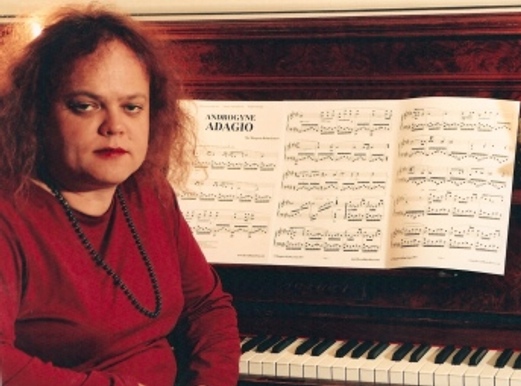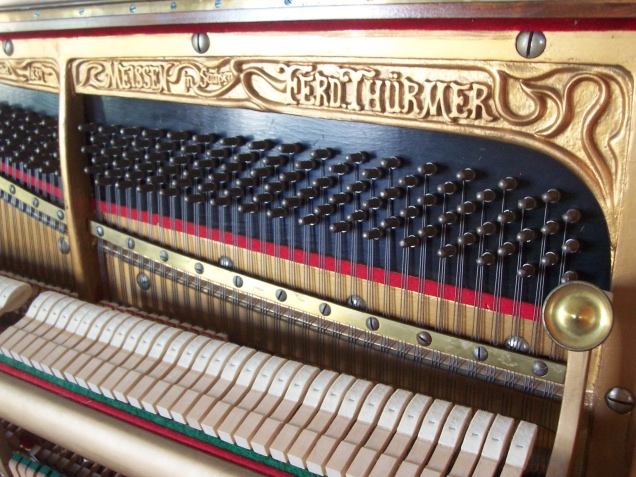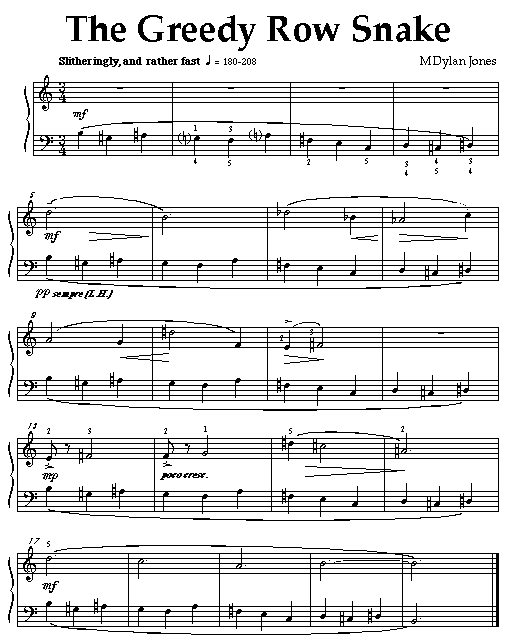
Online Piano Resources
Professional Services
All About Margaret
My sites
PIANO PAGES HOME
SINGING SITE HOME
RESOURCE REVIEWS HOME
Combined Entry Portal
Site List
BLOG
Mix Margaret Dylan Jones
W.A. composer, pianist, teacher, article writer
Original Compositions
As at 17 February 2023
Original professional concert music to enjoy, plus educational music that students love to play. Sudents from about age 7 to 70 really enjoy these little pieces.
Many pieces are available as free PDF files here: http://mixmargaret.com/pdf/
If you're a teacher you may remember The Greedy Row Snake, from Child's Play. It sold over 23,000 copies when it was in the AMEB's grade one exam book. Prayer of the Swinging Mantis is in the current syllabus (2018) and is published by the AMEB. You can hear me play both on Sound Cloud.
I have YouTube videos where I talk about the pieces and then play them.
Click on these links to skip down to each section on this page:
Three Parkerville Pieces
Androgyne Prophecy
Sonatina (new edition soon)
Colourfast Piano Music
Jump Right Ins: piano starters and re-starters
Child's Play
Machine Code (clarinet)
where eucalypts green-tip the sky (choir, revision in progress)
In progress: Greensleeves project (new page)
Some of these scores were originally published by the first iteration of Hovea Music Press, mostly in the 1990s. Since 2015 I've been re-issuing them. A few works are also published by other publishers and available through them (see below).
Sonatina
See the page devoted to each work for links to listen, watch vidoes, or print free PDF scores.
Original piano music to enjoyADVANCED PIANO
HMP 360p (may soon be available as a wire-bound book, HMP 360h). First published February 2023, as a pdf.Three Parkerville PiecesSuite of three piano solos:1. DNA in the Valley: the Evolution of Self-Awareness2. Puck at Parkerville (inspired by Shakespeare)3. Rainbows Over HoveaDownload the whole 21 page book incl. preface etc. by clicking here: three-parkerville-pieces-mdj-2023-hmp360p.pdf
Rainbows Over Hovea, YouTube video of excerpts from live performance June 2017.
Androgyne Prophecy (1977)
This soulful piano solo, composed when I was aged 16, remains one of my best compositions. Reminiscent of Beethoven’s Moonlight Sonata and the cavatina used in the 1978 film The Deer Hunter, this beautiful work is in C sharp minor (or C sharp aeolian mode). The level is about grade five or six. Also published in an easy arrangement in an easier key with no octaves and a simplified accompaniment, about grade three or four. Duration: 04:20 (or 02:30 with cuts).
See me play this on a grand piano on YouTube.
This entire piece, formerly titled Androgyne Adagio, was used on the George Negus Tonight ABC television programme, 20 July 2004 in a profile of my life as an androgyne. They featured me playing this on my Thurmer upright piano.
The GNT film crew were quite smitten with this four minute piece. Everyone loves this work, including me. Click here to see the first two pages, hear a sample, or watch a video of me playing and talking about Androgyne Prophecy.
Several arrangements of Androgyne Prophecy are in progress.
Sonatina (1981, rev. 2001) (advanced grade level). New edition soon.
This very dark and dramatic neo-tonal and atonal piano solo was written at a time of personal crisis.
For some of the piece there is not any one note to relate other notes to, echoing the sense of isolation often experienced by young people, especially if they are LGBTIQ.
At the end is a (prophetic) sense of partial resolution in the evocation of a peaceful Balinese gamelan percussion ensemble.
Duration: ca. 04:30
See Sonatina page for more about this music and a sample of the score.
Listen to the whole work on SoundCloud.
Educational piano music
Colourfast Piano Music
David Tunley, then a professor of music at the University of Western Australia, said of this book:"I particularly liked the way you inspire the young pianists to think about what they are learning and playing."From the pen of a piano teacher of many years' experience and a long time composer of educational music, these ten pieces help develop keyboard geography and musical imagination. Suitable for adults and children.
Teachers may know my slightly jazzy Prayer of the Swinging Mantis from this book. It's in the AMEB's current (2018) syllabus for Preliminary Grade, and is also found in Australian Anthology Prelim To Grade 4, published in 2003 by Allans Publishing (Hal Leonard Australia), official publishers to the AMEB.
From the PREFACE:
These delightful and easy pieces will stimulate the imagination in both young students and older beginners. Their wide variety of style encompasses frequent use of F sharp and B flat, which are usually the first black notes that students need to learn. Common tasks are introduced, such as the use of triads or pedalling. Students of all ages will love the easy but engaging rhythms.
EASY QUESTION PROMPTS
Music teaching should involve a partnership between composer and teacher, and between these two and the student. Rather than try to do everything for the student and teacher, EASY QUESTION PROMPTS assist the creativity of both. The prompts are provided for the teacher as examples of ways to get the student thinking about the music.
Compositional insights are only useful if you work them out yourself. So question prompts are designed to engage a student's mind, almost effortlessly, on the task of getting into the meaning and emotion of a piece but without providing all the answers.
The use of EASY QUESTION PROMPTS makes learning easier, quicker, and a lot more fun. Often students give completely unexpected answers that are perfectly correct. Unexpected answers are marvellous--imagine the feeling of involvement and recognition a student feels when he or she finds something in the music which the teacher hadn't thought of!
Each piece also has suggestions for practise.
Teachers: please give your students the chance to really understand what their music is about. Explore these charming pieces in partnership with the composer.
The music for the first edition of this group of pieces was edited by Professor Mark Coughlan, who at the time was Head of the School of Music, at The University of WA.
See the Colourfast page for these samples:
Jump Right Ins: piano starters and re-starters
Ideal for any student wanting to improve hand co-ordination and get off to a flying start, under the guidance of a teacher.
From the PREFACE
I believe music teaching should involve a partnership between composer and teacher, and between these two and the student. Rather than try to do everything for the teacher, I prefer to facilitate the teacher's own creativity and to respect the teacher's experience, ability, and need for creative input.
EASY QUESTION PROMPTS are provided as starters or examples to get the teacher & student thinking about the music...
If you've ever had students who could play only one hand at a time, you'll love these Jump Right Ins. These little pieces resulted from frustration with the poor hand co-ordination often displayed by students. They're attractive and easy, yet the hands are independent. Your students will wonder how they did it!These little gems provide an ideal way to develop & maintain interest in the early stages.
- Co-ordinate at the very first lesson
- Transpose at the very first lesson
- Imaginative titles that spark the student's interest
- Suitable for almost any age from total beginners to about grade two
- Get them off to a flying start - prevent frustration setting in from co-ordination difficulties.
- Revive sagging enthusiasm in students who are struggling.
This is not a tutor book, but you will find it indispensable for the lower grades and beginners of any age from about 5 to 65 years.
Examples from Jump Right Ins: piano starters and re-starters available soon:
Child's Play: Eight dodecaphonic piano solos and ensembles"You have provided an attractive set of pieces to introduce them to contemporary music. What you have done shows the mark of a good musician and teacher."This set of eight varied and accessible pieces was written to introduce students and teachers to the 12-tone serial technique. These character works show that serial music can be more than just pleasant but also fun, interesting, and stimulating to the imagination.
David Tunley, at the time a professor of music at the University of WA, referring to Child's Play.
Three YouTube videos:
Child's Play 1/3 with Upside-Downs.
Child's Play 2/3 Greedy Row Snake, Reuben's Big Day Out.
Child's Play 3/3 Webern, Schoenberg; Clouds (duet or solo), Alone in the Dark Forest (trio, duet or solo).
The composer took delight in finding unexpected melodic shapes and novel chords, stretching the technique in unusual ways to produce great variety. Most listeners would not recognise that the same tone row is used in almost every piece (only Clouds has a derivative row).
The pieces cover a range of levels from pre-initial to about grade 6 or 7, and include a trio where a novice can sit at the piano between experienced students and play a previously-learnt solo which fits into a new piece.
Though the dodecaphonic technique has been the basis of an enormous amount of music composed since the 1920s there are few other sets of educational 12-tone pieces.
The Greedy Row Snake from Child’s Play has sold over 23,000 copies since it was published by the AMEB and Allans Music in the Series 12 Pianoforte Grade One exam book in the 1990s. This little piece was played by many thousands of Australian students when it was in the exam syllabus.
Several pieces from Child’s Play are published by Currency Press in Australian Piano Music volumes 1, 2 & 4, edited by Sally Mays. Volume 1 is in the AMEB’s piano syllabus for preliminary and second grades but The Greedy Row Snake
dropped out of the exam list some years ago.
Please Note: several unauthorised recordings of The Greedy Row Snake were made available commercially in the 1990s. I suggest that all teachers and students use the printed music as their guide or recordings made or authorised by myself, not unauthorised recordings of unknown accuracy. I can, however, highly recommend the recording by Brian Chapman, published by Tonart Productions.
See the Child's Play page for these samples:
Clarinet
Machine Code
for unaccompanied clarinet
Machine Code is a term sometimes used to describe the most basic levels of computer operation. In this code, eight-digit binary numbers (consisting only of ones and zeros) are used to represent the letters of the alphabet. For example, the binary number for M is 11010100. These numbers are used very freely in this piece as a source of rhythmic material, by interpreting the ones as quavers and the zeros as quaver rests.
A source of contrasting rhythmic ideas is the Fibonacci series of numbers, used in the slow fourth section and the concluding sixth section. This series of expanding or contracting numbers also generates pitches as well as rhythmic shapes in the introductory phrases to sections one and five.
A musically attractive piece, perfect for concerts & recitals. Approximately grades 6 to 7.
© MDJ 1990
Example from Machine Code available soon.
Choir
Where eucalypts green-tip the sky
Thirteen poems by seven Australian writers as selected by Margaret Dylan Jones for their song cycle for choir, piano and speaking voices.
The full texts [were] published as a collection in a separate booklet.
The poems and poets are given below in the order they appear in the work. The first few lines are shown on a separate page.
STOP PRESS September 2020: I'm revising this song cycle, initially focusing on Marri with Nuts and Yellow Tingle Tree, which I hope to publish in 2021.
From the PROGRAMME NOTE:
"For several years I was involved intermittently in the practical side of an anti-clearfelling campaign to save old-growth forests. But eventually I felt that the best contribution I could make to conservation and social issues was to compose music on such themes.
"An opportunity arose when I was asked to deputise for the a new conductor of the Perth Discovery Choir for a few weeks, and to write something for the choir's tenth anniversary concert. Around the same time I saw a colour photograph of a yellow tingle tree on the front page of a major newspaper. The felled tree was being taken out of the forest on a logging truck, a scene the story had likened to a funeral procession. Unbeknown to me, my father, the late John Joseph Jones, a well-known and prolific writer, had seen the same story. Two days later his poem, Yellow Tingle Tree, arrived unheralded in my letterbox. This poem became the final song in where eucalypts green-tip the sky.
"I put out a call for more poems dealing with related themes. Another call for poems dealing with the difficult circumstance of the timber workers met with no response. After making a short list of twenty I chose thirteen poems by seven Western Australian poets. Six of the poems have been set to music for the choir, and the remaining seven are to be spoken---some with and some without accompaniment."
© MDJ 2004, rev. 2020. May be used in programme notes.
The number of speaking voices can vary (speaker numbers are suggestions only). See also the First Few Lines of each poem.
Examples from where eucalypts green-tip the sky available on the old website:The poems and poets in the order of the musical setting:
Shane McCauley
Landscape With Gum Trees
Speaker 1
(no text)
(no text) Piano solo
John Joseph Jones
Tuart Forest, Ludlow
Choir, piano
John Joseph Jones
Interceptor
Choir, piano, speaker 2
Gladys Milroy
The Last Tree
Speaker 3
Claire Grose
Green Gums and Gravel (excerpt 1)
Speaker 4
Andrew Lansdown
Marri with Nuts
Choir, piano
Andrew Lansdown
Jarrah
Speaker 2
Claire Grose
Green Gums and Gravel (excerpt 2)
Speaker 4
Andrew Lansdown
Breaking Out
Choir, choral speaking, piano
Andrew Lansdown
A Remembrance of Robins
Speaker 2
Claire Grose
Green Gums and Gravel (excerpt 3)
Speaker 4
Jean Argyle
Woodchipping
Choir, piano, speaker 2
Shane McCauley
Karri Forest
Speaker 1
John Joseph Jones
Yellow Tingle Tree
Choir, piano
Jack Davis
Forest Giant
Speaker 2, piano
Note: the full text of the poem Green Gums and Gravel [was] printed at the end of the booklet (but not the musical score).
The speakers may be chosen from the choir.
The form is modular. Choir directors may pick and choose a selection from sixteen pieces, including six choral sections and one piano solo. The full work takes about 20 minutes. Some items may be sold separately.
Practise recordings will be available.


My sites
Entry Portal
BLOG
(leave a comment)
Facebook:
MixMargaretDylanJones
SoundCloud
(free recordings)
YouTube (videos)
Site List
How to refer to Margaret
margaret-mx-she-they.html